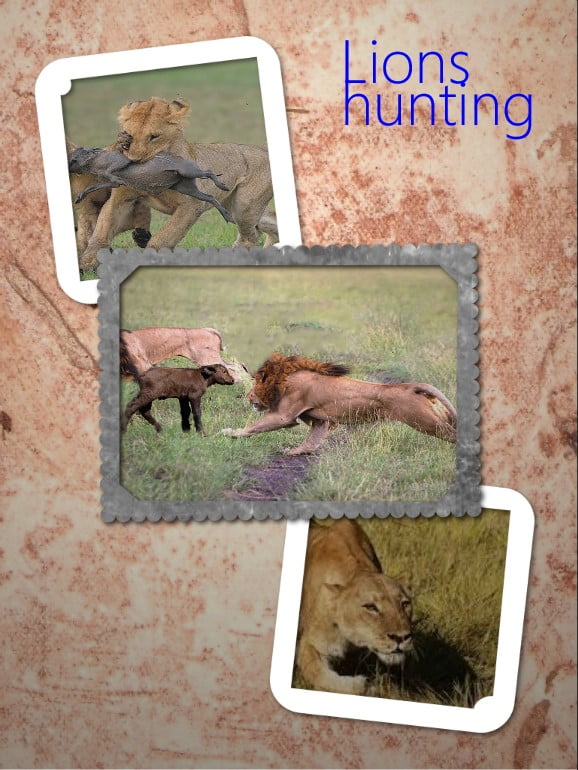The hunting success rate of lions is very variable depending upon the height of the vegetation, pray behavior and the lunar phase among other variables. It is said that “numerous environmental and biological factors interact to influence their hunting success”1.
“The reported kill rate of individual lions varies from a low of ten to twelve prey per year to a high of forty-seven; thus there is no standard.” (Stander PE 1992 Foraging dynamics of lions on semi-arid environment and Stander PE and Albon SD in 1993 Hunting success of lions in a semi-arid environment)
In the same studies it was found that in the Etosha National Park lions averaged a kill every 6.7 hunts which translates to a success rate of 15%. The success rate for zebra was, however, 11% and for wildebeest it was 30%. There was a 52% success rate for springhare. In other areas success rates varied from 21% to 38.5%.
In another study of 1990 by G Mills, The lion and cheetah in Kruger National Park, South Africa, Mr Mills followed lion groups for 14 continuous days. One of the groups consisting of two adults with seven cubs made one significant kill, a zebra foal, during the entire two-week observation but during a different two-week period the same group killed at a far greater rate.
In another study concerning lions in Uganda, Foraging behaviour and hunting success of lions in Queen Elizabeth National Park, Uganda by Karl van Orsdol it was found that the success rate for lions hunting in an area where there was no stalking cover, and low prey density was very similar to another area where the vegetation was taller and prey density more than five times higher.
In the former area (Mweya) where the grass was 5 cm high, lions watched for warthogs and other prey that was easy to catch from daytime resting sites. The lions were able to find food without actually searching for it during the day. At night they moved around looking for larger game. In the latter area (Ishasha) where the vegetation was much taller the lions hunted mainly on moonless nights when they had the highest success rates. The overall success rates were 27.1% in Mweya and 30.5% in Ishasha.
Lions are more successful hunters than other cats but of course they have to share their prey with other pride members. Perhaps this means that they have to be more successful in order to be able to consume their estimated minimum daily requirement of 5 to 8.5 kg of meat per lioness per day.
The references stated were used in the excellent reference work: Wild Cats of the World by the Sunquists. Ref 1 comes from this book.


